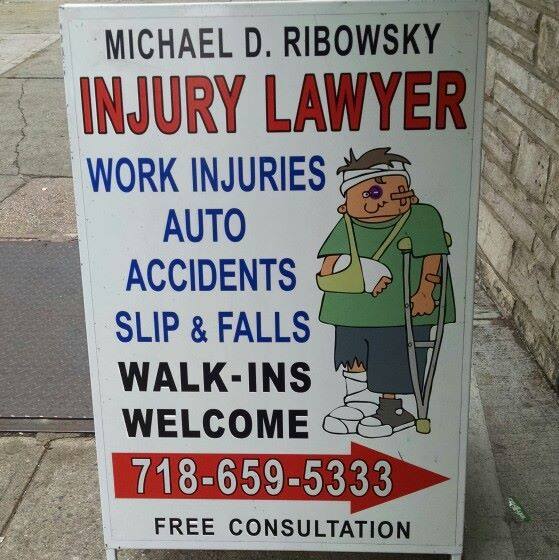Accident & Injury Lawyer Queens, NY | Ribowsky Law

Ladies and gentlemen, dear Queens residents alike. The Ledger is beyond proud to present to you our number one choice for personal injury and car accidents law. This contingency based firm scored highest on all of our local attorney ranking variables. Without further adieu we would like to present our Queens Ledger Featured Accident & injury lawyer. The winner is – Michael and Mark Ribowsky – the father and son duo. Their official contact information is: Ribowsky Law- Queens Personal Injury & Accident Lawyer 109-12 Jamaica Ave, Richmond Hill, NY 11418 (718) 659-5333 https://www.mrinjurylawyerny.com/.
And now we will go through one of the most critical topics in the niche. For decades, people have been falling on sidewalks, supermarkets and other public areas and trying to bank off of it. Now we will highlight all the ins and outs of NY Slip & Fall laws.
Can you sue NYC for falling on sidewalk?
New York City Administrative Code section 7-201 states that in order to sue the City of New York for the failure to properly maintain a sidewalk, an injured person must prove that the City of New York had received “prior written notice” of the defective sidewalk condition (crack, pothole, unevenness, etc.)
There are some rules for sidewalks in NY state, that being: Sidewalks should be free of cracks or holes and have an even surface. NYC relies on property owners to maintain the sidewalk adjacent to their property, including repairs and removal of snow, ice, or debris.
As the property owner, you are responsible for building or repairing the sidewalks next to your property and maintaining them in a reasonably safe condition. Regardless of what or who caused the damage, you will be liable for any violations and fines accrued by the damaged sidewalks.
The Slip and Fall Statute of Limitations in New York:
Specifically, under New York Civil Practice Laws & Rules section 214, anyone who was injured in a slip and fall on someone else’s property must get their lawsuit filed against the property owner within three years.
While the idea of an “average payout” exists as a theoretical mathematical calculation, as a practical and realistic matter, there is no such thing as an average slip and fall settlement in New York City. Slip and fall compensation amounts vary depending on many factors that are unique to your accident.
New York City Administrative Code §7-210 imposes a duty upon owners of real property to maintain the sidewalk abutting their property in a reasonably safe condition and provides that owners are liable for personal injuries that are proximately caused by such failure.
Sidewalk slabs often must be at least 4 inches thick, so we’re talking at least $5 to $6 per square foot for the new section.
Liability for injuries sustained as a result of a dangerous condition of the public sidewalk remains with the municipality and does not shift to the owner of the abutting property. Exceptions to this rule include when the landowner actually created the dangerous condition, made negligent repairs thereby causing the condition, created the condition through a special use of the sidewalk, or violated a statute or ordinance imposing liability on the abutting landowner for failing to maintain the sidewalk.
Very often, plaintiffs seek to commence a lawsuit after the somewhat brief statute of limitations for claims against the municipality has expired, or when prior actual written notice cannot be proven against the City, leaving plaintiff with little choice but to seek to establish liability on the part of the abutting landowner. The most prevalent claims that attempt to place liability on an abutting landowner of a one, two or three family home include claims of a defect located on the portion of the sidewalk over which the landowner’s driveway (i.e. a “special use”) crosses and where it is claimed that the landowner made “ineffective repairs“ of a defect (or incomplete removal of snow or ice) that allegedly resulted in a more dangerous condition.
Most of the allegations faced by landowners for incidents that occurred on abutting sidewalks have been well litigated. There are few “gray areas” remaining or issues of first impression. Thorough legal research by knowledgeable counsel can almost always uncover legal decisions in cases involving similar facts in which the issue of liability has already been determined by the appellate courts.



